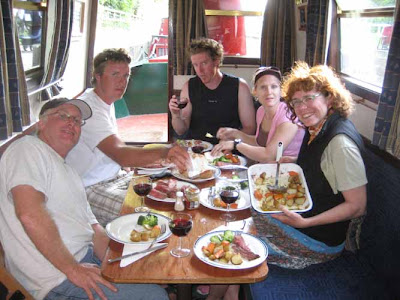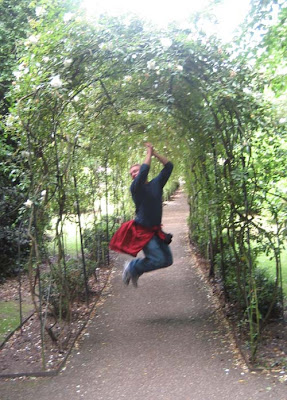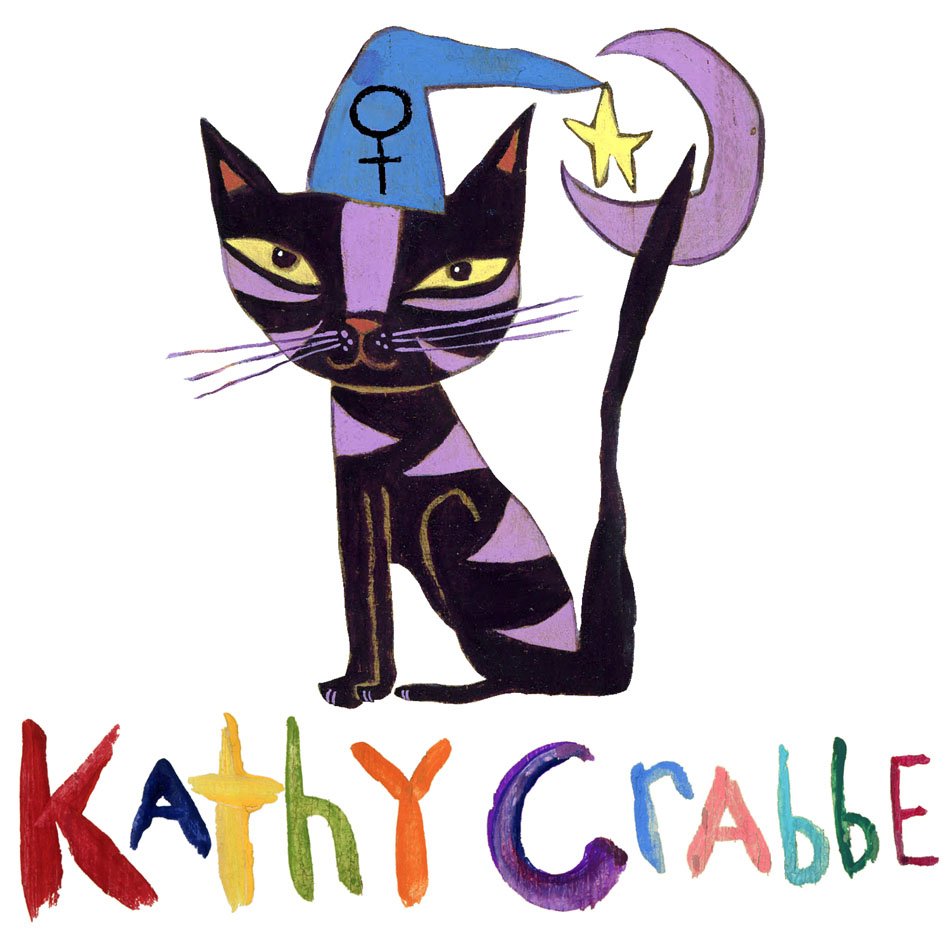Friday's post is dedicated to my Gran Betty who lives in a nursing home and used to own a canal boat in England called The Fiddlehead. This is my weekly letter to her. This post also commemorates a recent family trip taken by thirty-five family members as we motored five canal boats (at three miles an hour) along the Leicester Loop in England on a two week vacation sponsored by Gran herself. We ranged in age from eight months old to ninety-one (Gran herself) and it was a trip I shall never forget!

This is me casually steering a several ton canal boat - no worries, just watch out for ninety degree angles that require turning whilst going under a curved brick bridge - oops! (I guess anyone can make a mistake on their first day out!)
 Two pages from my sketchbook, painted hastily (well as fast as one can while scenery whips by at two miles an hour from the deck of a boat!)
Two pages from my sketchbook, painted hastily (well as fast as one can while scenery whips by at two miles an hour from the deck of a boat!)

This is Jackie, one of my ship mates (and engaged to my cuz, at the time this was taken) swabbing the deck - those Virgos do love to be tidy! (And I should know, 'cause I'm one of them.)

Just a regular canal boat dinner. We all took turns pairing up to cook. That's me on the right and my hubbie across from me (in the front,) with Jackie next to me and my two cousins alongside. We all shared this particular boat (unofficially known as the 'party-boat,') along with my brother Pete (who was taking the picture.) Everyone really went all out with the cooking - buying meats from small village meat shops, veggies from small supermarkets, good wine and all the fixings; all trying to outdo each other, but we were the envy of the other four boats, I can tell you that much!
Gran - Part 1
Gran - Part 2
Gran - Part 3
Gran - Part 4

 Journaling along in my Moleskin.
Journaling along in my Moleskin. My husband learned a cheer or two from Jackie, our very own cheerleader.
My husband learned a cheer or two from Jackie, our very own cheerleader.












